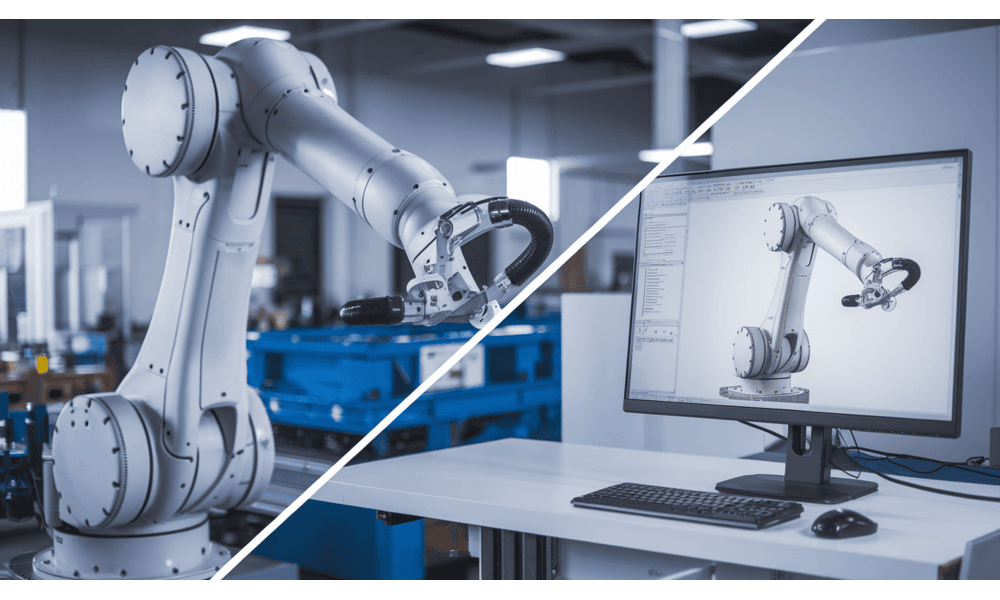When you're launching an industrial product, like a machine, control panel or any equipment, there’s a long list of things to get done. Marketing, packaging, training, support... the list never ends.
But one thing often gets skipped or rushed: the manuals.
You know you need “documentation,” but should that be a user manual, a maintenance manual, or both?
Let’s break it down and help you get it right the first time.
What is a User Manual?
A user manual is designed for the end user — the person responsible for operating the machine or system. This could be a machine operator, plant technician, site supervisor or equipment installer. It is typically included at delivery or handover of the product.
Industrial user manuals often include:
- Step-by-step instructions for installation, startup, and operation
- Safety warnings and symbols as per ANSI Z535.6 or ISO 3864
- Equipment overview and control interface functions
- Basic maintenance recommendations (e.g., cleaning, routine checks)
- Quick troubleshooting for user-level issues
- SOPs and assembly procedures (if applicable)
- HMI or control panel navigation guidance
For instance, for a leak testing machine, a user manual might explain:
- How to connect air and power supply and stay safe while doing it
- How to set test values on the screen, like pressure and time
- How to change the part holders when testing different parts
- What the lights and alarms mean, like if a part fails the test
- How to stop the machine safely and restart it if something goes wrong
It’s designed to be simple and useful. Think: “just enough detail to get the job done.”
What is a Maintenance Manual?
A maintenance manual explains how to keep the product running smoothly over time. It’s targeted toward professionals responsible for the upkeep of the machine, usually field technicians, in-house maintenance crews, or third-party service providers.
It goes deeper into the system than a user manual and focuses on preventive, predictive, and corrective maintenance tasks.
A well-structured maintenance manual includes:
- Scheduled service intervals (daily, weekly, monthly, annual)
- Exploded-view diagrams with part numbers
- Disassembly and reassembly instructions with required tools
- Electrical, pneumatic or hydraulic schematics
- Lubrication points and calibration routines
- Software/firmware update procedures (if applicable)
- Spare parts list
- Troubleshooting and repair guidelines
Example: A maintenance manual for machines like FlexLink conveyor might include:
- How to check and tighten the conveyor chain regularly to keep it running smoothly and straight
- How to inspect the drive and idler units for any wear or damage
- How to clean dust and debris from under the track and around the rails each week
- When and how to replace worn chain links or guide rails if the conveyor starts running roughly
- Advice on monitoring motor sounds and temperature to detect early signs of potential problems.
This manual becomes the go-to reference for keeping the machine within its expected lifecycle and performance envelope. It’s more complex than a user manual, and that’s okay. It’s written for people who already have technical know-how.
User Manual vs. Maintenance Manual: What’s the Difference?
While both technical manuals are essential for industrial equipment, they serve different purposes and audiences.
A user manual is created for operators and end-users. It usually focuses on safe installation, daily operation and basic troubleshooting.
In contrast, a maintenance manual is intended for technicians and service teams, offering in-depth guidance on inspection, repair, servicing routines and component-level schematics.
The key difference lies in the depth of information and the user’s technical skill level.

When Do You Need Both Manuals?
If you’re:
- Delivering a machine or industrial product to a customer
- Releasing a new version of your equipment
- Bidding on a project that requires compliance
- Building a product that needs regular maintenance
- Hoping to avoid repeated support calls
…then yes, you absolutely need both.
In short, if your product runs and requires maintenance, you‘ll need both manuals.
What Happens If You Don’t Have Proper Documentation?
Skipping manuals might seem like a time-saver at first, but it often leads to bigger issues down the line:
- Users misuse the product or break it
- Your team wastes hours answering repeat questions
- You lose credibility with customers
- Safety risks increase (and so do liability concerns)
- Regulatory agencies may fine you or block sales
Poor documentation not only undermines operational efficiency but can also lead to increased errors, longer downtimes and higher support costs. This directly impacts your bottom line.
Technical Documentation and Regulatory Compliance
Many industries have strict documentation requirements. If you're selling product or machinery in the U.S., EU or global markets, you likely need to comply with:
- CE Marking / EU Machinery Directive: Requires a Technical File, including instructions for safe operation and maintenance
- UL / CSA Compliance: Some panels or electrical products require documented usage instructions
- OSHA (U.S.): Demands clarity in hazard communication and proper operating guidance
- FDA / ISO 13485: For medical devices, thorough documentation is essential for meeting regulatory compliance and ensuring patient safety.
- RoHS, REACH, and EMC Directives: May require special labeling and documentation around component use and environmental risk.
- BIS / IEC Standards (India & Global): Indian and international benchmarks for safety and performance.
If you’re unsure what regulations apply, a technical writer with compliance knowledge can help bridge that gap.
What a Good Technical Manual Looks Like (Checklist)

A well-designed manual should include these key elements:
- Clear layout and structure with simple, numbered steps
- Safety notes, warnings and compliance statements (e.g., Declaration of Conformity)
- Easy-to-read diagrams and glossary for technical terms
- Installation, maintenance and care instructions
- Troubleshooting guide and parts list (Bill of Materials)
- Contact information for technical support
- Version control and updates
- Digital-friendly format (PDF, HTML)
Want to test your current manual? You can use this as your benchmark.
For projects with many product versions or regular updates, it’s recommended to use structured authoring frameworks like DITA (Darwin Information Typing Architecture). It helps create reusable content like procedures, warnings or product specs that can be used across different manuals. This keeps your user and maintenance manuals consistent, reduces errors and makes updates quicker.
Can AI Write Technical Manuals?
Wondering whether you can use AI tools to generate technical documentation for industrial equipment?
AI tools like ChatGPT or DeepSeek are great assistants. They can help outline, organize or speed up drafting.
But can AI replace a human technical writer? Not yet.
Here’s why:
- AI doesn’t know your product’s specific details
- It can miss safety-critical points or use incorrect terminology
- It can’t test procedures or speak with engineers
- It doesn’t ensure compliance
So while we use AI in our writing process (for research, drafts or formatting), your manual still needs a real expert to make it accurate, safe, and usable.
Why You Shouldn’t Leave This to Your Engineers
Engineers shine when it comes to any new product development. But writing clear instructions isn’t always their strength.
Most engineers:
- Use jargon without realizing it
- Focus too much on technical detail (or too little)
- Struggle to explain things from a beginner’s point of view
That’s where technical writers come in. They:
- Translate complex ideas into clear, step-by-step content
- Organize it in a way real users understand
- Add visuals and diagrams
- Make sure it meets industry standards and looks professional
Ready to Launch Your Product? We Can Help.
If you’re building or launching a product, don’t wait until the last minute for documentation.
At Sedin Engineering, we
- create user manuals that reduce support calls
- write maintenance manuals that keep machines running
- provide clear installation quick start guides that simplify setip
- write regulatory compliance documents that speed up your product approvals
- handle formatting, diagrams and delivery
Contact us today. We’ll review your product and recommend what kind of documentation you need.



